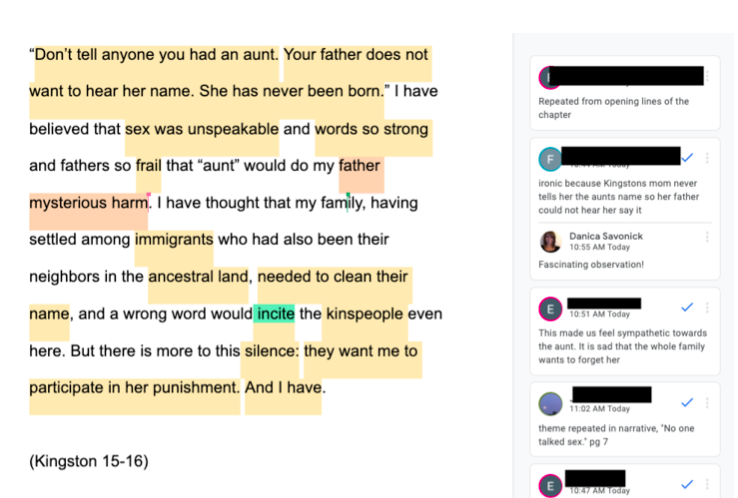Collaborative Close Reading Online
This blog explains how collaborative close reading can be done online. I recommend reading that post before this one.
Since posting my collaborative close reading activity nearly two years ago, photographs of colorful, annotated excerpts have circulated on social media from classrooms all over the world. As professors have adapted this activity for different classroom contexts, I’ve witnessed students who I’ll never meet (but who will, one day, be our doctors, lawyers, and elected officials) practice reading slowly, deeply, and carefully together. I’ve watched them build off of each other’s ideas, debate the significance of words, and make thoughtful and exciting interpretations of texts, providing evidence to support their claims.
Since then, a lot has changed. Now, in October 2020, many of us are attempting to teach and learn amidst a world that is, quite literally, on fire. As we teach online, some for the first time, we are looking to the digital learning experts who have been doing this for decades and using any creative energy we can muster to design meaningful assignments that engage students without overwhelming them. Our students, too, are engaging in daily acts of heroism as they pursue education amidst such exhausting and attenuating circumstances.
In this blog post, I explain how collaborative close reading can be done online. As in the original, this version of the assignment was designed for a general education course, “Introduction to Multicultural Literature,” with 25 students, though it can certainly be adapted for other contexts. While this version involves slightly more setup on the instructor’s end, once you’ve used it in one class it can easily be replicated for others. Unlike virtual classes that can seem to go on for hours, our class realized that time flies when you’re digitally annotating passages from the assigned reading (again, Maxine Hong Kingston’s feminist masterpiece The Woman Warrior).
I share this assignment and invite you to copy, use, and remix it to your heart’s content. My hope is that it can make the lives of some professors and students the tiniest bit less stressful and more joyful.
Read the full post on HASTAC.






